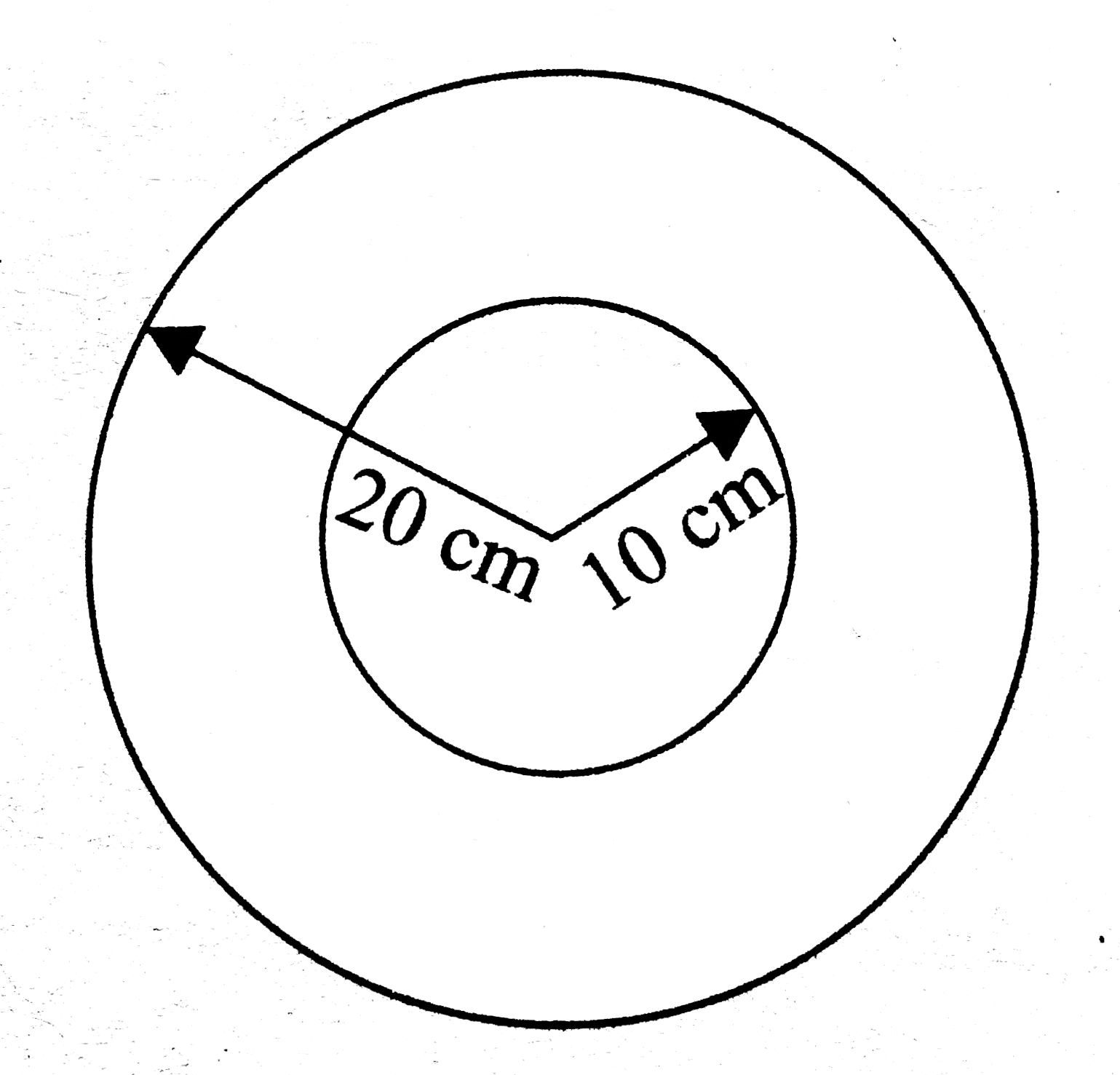The electric field strength in air at NTP is 3×106V/m. The maximum charge that can be given to a spherical conductor of radius 3m is
3×104C
3×10−3C
3×10−2C
3×10−1C
The correct Answer is:B
To find the maximum charge that can be given to a spherical conductor of radius 3 m in an electric field of strength 3×106V/m, we will follow these steps:
Step 1: Calculate the Capacitance of the Spherical Conductor
The capacitance C of a spherical conductor is given by the formula:
C=4πϵ0R
where:
- R is the radius of the sphere (3 m),
- ϵ0 is the permittivity of free space, approximately 8.85×10−12F/m.
Substituting the values:
C=4π(8.85×10−12)(3)
Calculating this gives:
C≈4π(8.85×10−12)×3≈3.34×10−10F
Step 2: Calculate the Voltage across the Spherical Conductor
The voltage V across the conductor can be calculated using the relationship:
V=E×R
where:
- E is the electric field strength (3×106V/m),
- R is the radius of the sphere (3 m).
Substituting the values:
V=(3×106)×3=9×106V
Step 3: Calculate the Maximum Charge Qmax
The maximum charge that can be stored on the conductor is given by:
Qmax=C×V
Substituting the values we calculated:
Qmax=(3.34×10−10)×(9×106)
Calculating this gives:
Qmax≈3.006×10−3C≈3×10−3C
Final Answer
Thus, the maximum charge that can be given to the spherical conductor is:
Qmax≈3×10−3C
---
The capacitance C of a spherical conductor is given by the formula:
C=4πϵ0R
where:
- R is the radius of the sphere (3 m),
- ϵ0 is the permittivity of free space, approximately 8.85×10−12F/m.
C=4π(8.85×10−12)(3)
Calculating this gives:
C≈4π(8.85×10−12)×3≈3.34×10−10F
The voltage V across the conductor can be calculated using the relationship:
V=E×R
where:
- E is the electric field strength (3×106V/m),
- R is the radius of the sphere (3 m).
V=(3×106)×3=9×106V
The maximum charge that can be stored on the conductor is given by:
Qmax=C×V
Substituting the values we calculated:
Qmax=(3.34×10−10)×(9×106)
Calculating this gives:
Qmax≈3.006×10−3C≈3×10−3C
Thus, the maximum charge that can be given to the spherical conductor is:
Qmax≈3×10−3C
Similar Questions
The insulation property of air breaks down at E=3×106volt/meter. The maximum charge that can be given to a sphere of diameter 5m is approximately (in coulombs)
View SolutionWe have an isolated conducting spherical shell of radius 10cm. Some positive charge is given to it so that the resulting electric field has a maximum intensity of 1.8×106NC−1. The same amount of negative charge is given to another isolated conducting spherical shell of radius 20cm. Now, the first shell is placed inside the second so that both are concentric as shown in (Fig. 3.154).
 .
.
The electric field intensity just inside the outer sphere.
View SolutionWe have an isolated conducting spherical shell of radius 10cm. Some positive charge is given to it so that the resulting electric field has a maximum intensity of 1.8×106NC−1. The same amount of negative charge is given to another isolated conducting spherical shell of radius 20cm. Now, the first shell is placed inside the second so that both are concentric as shown in (Fig. 3.154).
 .
.
The electric potential at any point inside the first shell is.
View SolutionWe have an isolated conducting spherical shell of radius 10cm. Some positive charge is given to it so that the resulting electric field has a maximum intensity of 1.8×106NC−1. The same amount of negative charge is given to another isolated conducting spherical shell of radius 20cm. Now, the first shell is placed inside the second so that both are concentric as shown in (Fig. 3.154).
 .
.
The electrostatic energy stored in the system is.
View SolutionWe have an isolated conducting spherical shell of radius 10cm. Some positive charge is given to it so that the resulting electric field has a maximum intensity of 1.8×106NC−1. The same amount of negative charge is given to another isolated conducting spherical shell of radius 20cm. Now, the first shell is placed inside the second so that both are concentric as shown in (Fig. 3.154).
 .
.
If both the spheres are connected by a conducting wire, then.
View SolutionThe dielectric strength of air is 3.0×108V/m. A parallel plate air capacitor has area 20cm2 and plate separation √2mm. Find the maximum rms voltage of an AC source which can be safely connected to this capacitor.
View SolutionThe electric charges are distributed in a small volume. The flux of the electric field through a spherica surface of radius 10 cm surrounding the total charge is 20V−m. The flux over a concentric sphere of radius 20 cm will be
View SolutionCan 8.6×10−19 Coulomb of charge be given to a conductor? Explain.
View SolutionThe dielectric strength of air is 3.0×106Vm. A parallel-plate air-capacitor has area 20cm2 and plate separation 0.10mm.Find the maximum rms voltage of an AC source which can be safely connected to this capacitor.
View SolutionA spherical conductor of radius 2m is charged to a potential of 120V. It is now placed inside another hollow spherical conductor of radius 6m. Calculate the potential to which the bigger sphere would be raised
View Solution
